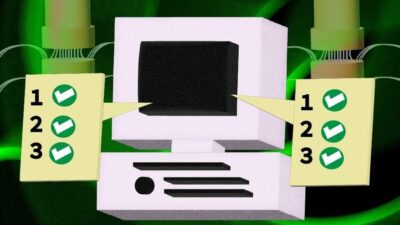Explore the three important factors of deploying an edge computing solution.
With the growth in connected devices and machines, industrial enterprises are realizing the need for an efficient way to manage large amounts of data, which in turn escalates the importance of edge computing. As industrial technology becomes more complex and devices become more powerful, edge computing is emerging as a valuable solution for harnessing all this computing power for business value. Today, edge devices go beyond basic automation, enabling industrial enterprises to perform an expanding array of advanced computing and analytical tasks.
Many of these tasks have previously only been associated with the cloud. Organizations today are finding they don’t have the connectivity required in their operational technology (OT) infrastructure to send massive amounts of data to and from the cloud; nor do they have the luxury of time. Latency issues impede the ability to act on data in real time. Therefore, having this computing power at the edge can be more practical and cost-effective for organizations with Big Data and real-time analytic needs.
Edge computing puts processing power closer to where measuring and decision-making occur in the control loop, and can greatly benefit industrial enterprises. Some emerging edge computing solutions can give users the benefits of the cloud without the limitations and vulnerabilities.
When evaluating these technologies, companies should look at these three critical components to help ensure a successful, "cloud-like" edge computing deployment:
1. The elimination of production downtime
Uninterrupted production and driving overall efficiency will always be priorities for gaining value with the Industrial Internet of Things (IIoT). To more efficiently distribute workloads for mission critical functions and real-time processing, enterprises should look to real-time analytics platforms that process and analyze data right where it is generated, at the edge. Performing this automated decision-making as close as possible to the process itself makes sense for applications such as advanced monitoring and diagnostics, real-time machine performance optimization, and predictive maintenance. Computing at the edge can help industrial enterprises reduce unplanned downtime and ensure uninterrupted productivity, while driving cost efficiencies as a result.
2. The ability to analyze, act on and protect data in real-time
The more enterprises use data from automated systems and IIoT, the more critical data becomes. In fact, the data produced may be an organization’s most valuable asset from their IIoT efforts. Leveraging edge computing enables enterprises to find real-time value in critical data, without the latency associated with storing the information in a physical data center or the cloud.
Because of its value, that data must be protected. This requires ensuring reliable infrastructure, predictive servicing, performance applications and secure connectivity. Enterprises will need to protect their hardware while also addressing the need for unified edge infrastructure to evolve their existing capabilities to make the best use of critical data.
3. Simplifies operations
With the rise of IIoT, industrial enterprises are blurring the line that separate the enterprise data center and business systems (IT) from production automation systems (OT) and their respective networks. This converged "hybrid OT professional" has a unique combination of skills to bridge the gap separating the IT and OT worlds, thus reducing the burden on IT teams along their organization’s IIoT transformation.
The growing adoption of IIoT is creating more demand for processing and data-intensive computing at the edge. By merging IIoT applications and software along with comprehensive predictive modeling capabilities, enterprises can unlock the next generation of edge processing. Edge computing reduces production downtime and related costs, drives value in critical data, and enables OT to lead the IIoT transformation, which minimizes the burden on IT teams. Leveraging the power of edge computing will help enterprises succeed as they take off on their IIoT journey.
Jason Andersen, vice president, business line management, Stratus Technologies. Stratus is a CSIA member, a CFE Media content partner. Edited by Emily Guenther, associate content manager, CFE Media, [email protected].



